Many in the international community cheered the latest apparent breakthrough in mediating the ongoing conflict in Libya. Unfortunately, it’s not likely to amount to much—both because of the political and security difficulties plaguing Libya, and because the main problem Libya poses for Europe is actually rooted in the Sahel. That region, from which much of the recent migration to Europe stems, hasn’t featured nearly as prominently in European security discussions as it should.
The Libya picture
On July 25 in Paris, the two leaders of Tripolitania and Cyrenaica (Libya’s warring regions since 2014)—Prime Minister of the Government of National Accord Fayez al-Serraj and Field Marshal Khalifa Haftar—met at the behest of newly elected French President Emmanuel Macron. At the meeting, which was overseen by the new U.N. special envoy to Libya Ghassan Salamé, Serraj and Haftar signed a much-celebrated joint declaration. They committed themselves to 10 points, including a ceasefire, the establishment of a regular army, and the implementation of an electoral process preparing for the elections that Serraj would like to hold in March 2018.
The French have claimed a diplomatic achievement (something the Italians—who have done so much in recent years to try to broker a compromise between Libya’s eastern and western parties—may have resented). And Macron followed up that he’d like to put a French hotspot on Libyan soil to directly control the migration flux. The day after the meeting in Paris, Serraj went to Rome for a meeting with Italian premier Paolo Gentiloni (Haftar, for his part, opposes an Italian role). There, some local politicians also highlighted Italy’s work on the issue.
But even with a shiny new agreement, serious doubts remain for Libya’s future. The country is deeply fractured with few, if any, effective institutions, as I’ve outlined repeatedly. Too many years have passed since Libya last had a functioning government—Gadhafi, while ruthless and not very productive, kept control.
We remain far from any real success, and at the moment, the words are just words. Neither Serraj nor Haftar truly have a popular mandate, as the Libyan people did not choose either of them. Moreover, peace in Libya won’t be possible until other local and foreign interlocutors—most importantly countries like United Arab Emirates, Qatar, Egypt, Russia, and Turkey, for which Libya has become an international chessboard—are brought to the table.
The Sahel picture
Stabilizing Libya is of course fundamental to Libyans, who after more than six years of civil war—and decades of autocracy before that—deserve better. It’s fundamental to Europe because, among other reasons, Libya is the open door through which tens of thousands of African migrants pass each year to cross the Mediterranean into Europe. In the first five months of 2017 alone, more than 60,000 such migrants arrived in Italy—departing from Libyan shores.
In that sense, then, the French-brokered deal only addresses the tip of the iceberg. The mammoth challenge lurking underneath is a complex set of security and development failings in sub-Saharan Africa.
Drought, famine, and violence characterize much of the Sahel. In 2016, more than 30 million people in Mauritania, Niger, Nigeria, Burkina Faso, Cameroon, Mali, Senegal, and Chad were food insecure, while 12 million were in need of emergency food assistance. Life expectancy in the Sahel region is a mere 52 to 66 years, depending on the country. The rise of oceans’ temperatures has altered the rain: Green regions have dried up and nomad tribes have lost their herds. Furthermore, the proliferation of light weapons has affected tribal dynamics in troubling ways. It’s no wonder people migrate north in droves. Some of them—the majority—are seasonal and migrate within the African continent, but some portion is interested in crossing the Mediterranean Sea. That portion is significant for Europe.
At the moment, they do so largely through the town of Agadez in Niger—last year, 291,000 people passed through, many hoping to eventually reach Europe. It is the French, in fact, who could probably have the most influence over developments in Agadez, as Gianluca Di Feo recently illuminated in the pages of Repubblica. Fort Madama, a colonial outpost that France built in 1931 (and which was reinforced by another military base in 2014), is 800 kilometers from Agadez. The area is under the shared control of the French and the Nigerien armies, but currently they focus on the jihadi threat, not the migratory flows. France’s main concerns in the region are combating terrorism and maintaining access to the uranium mines that fuel their nuclear plants; Niger, for its part, can win easy gains from migrant flows, and security guards have been known to look the other way as trucks full of desperate people drive by, perhaps profiting from the human smuggling economy. As Brookings Senior Fellow Vanda Felbab-Brown has detailed, European countries have tried various initiatives in the Sahel region. But it is not easy to determine the right strategy or to implement it. The obstacles are many, but without a serious effort to tackle the multi-fold challenges in the Sahel, migrants will continue to head through Libya to Europe. Hence, the tip-of-the-iceberg problem with the Haftar-Serraj deal.
Solutions amid the chaos
None of this can be fixed overnight, and none if it can be solved by a single European leader alone. European countries are rightly focused on the challenges that Libya poses for their own security, but they need to go deeper into the continent to get at root causes. And France is particularly well-positioned to help in a less superficial way, via its military presence in Niger. The Agadez region should be the focus of efforts to control migration, at least as a first step. It could be a good hotspot for the French—who already have Mirage squadrons, drones, and helicopters there—and a way to demonstrate their presence.
When viewed in the context of the broader challenges facing the Sahel, attempting to patch the political situation in Libya—a major challenge of its own right—seems like an attempt to cure only the symptoms of a much bigger disease. Recall that in 2006, 22,061 migrants landed in Italy via the Mediterranean route; in 2016 the number was 180,000. Those are dizzying figures, and the new Serraj-Haftar deal brokered in France won’t make a dent.
It’s perhaps an obvious yet very inconvenient truth that complex problems usually require complex solutions. Among other things, it is crucial that countries of Europe, Africa, and the Middle East act as a coalition—not France alone. What we really need is a strategic vision that seeks to eliminate the source and motivation that pushes thousands of people to leave their own land. For Libya, as I’ve argued in the past, deep decentralization—and in the end, federalism—should be considered so that territory can be better controlled, starting from the municipalities. They should have more independence, while oil management should be centralized and its revenues should be distributed to the local governments. No one—in Libya or elsewhere—thinks that it would be easy. Libyans will need help. But we have to start at some point.
For the Sahel, the strategy must take into account the economic and social motivations that have led to the migration, and must seek to create a viable alternative to migrants’ trade that stimulates micro-enterprise and limits corruption. A serious plan is needed to help Africa to re-build. Treating symptoms wastes valuable time as the disease continues to spread.

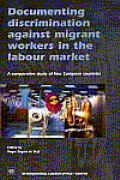
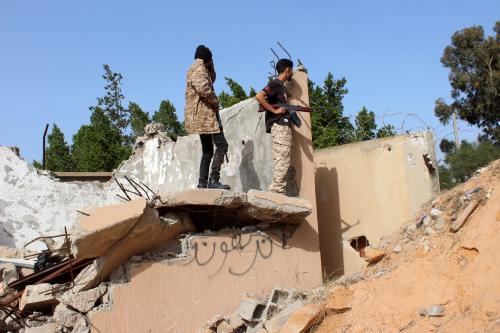
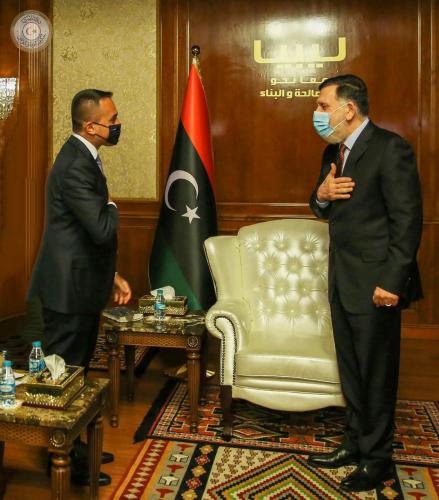
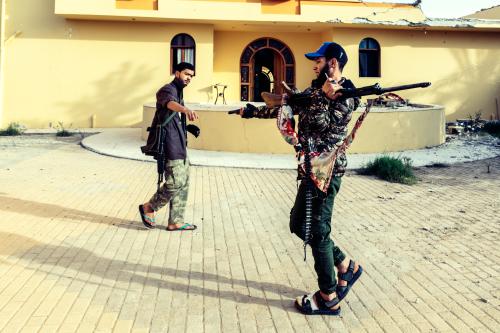


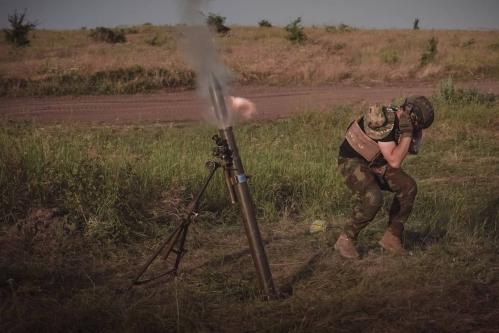
Commentary
A deal in Libya? Don’t applaud just yet
August 4, 2017